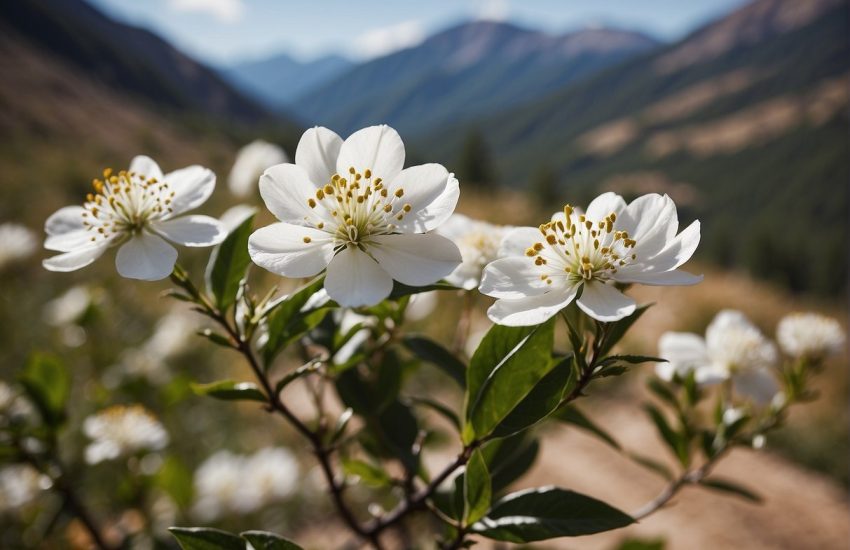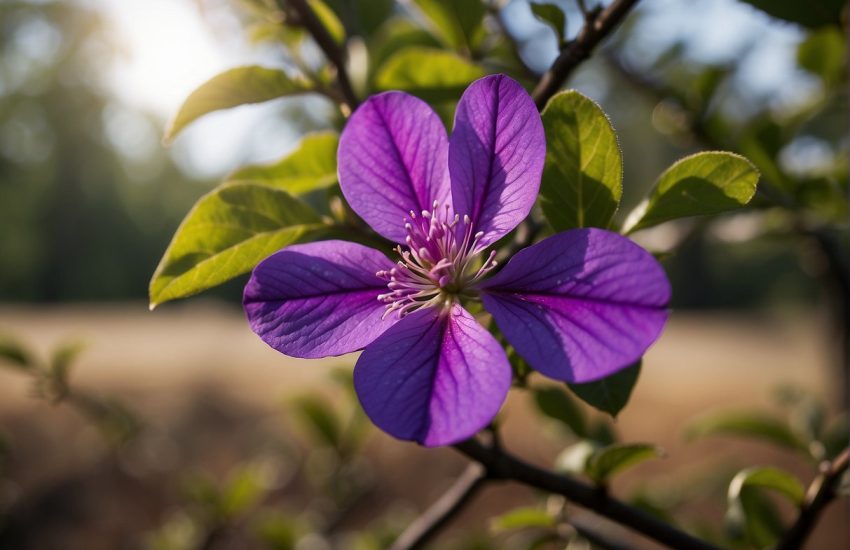Do Cherry Blossoms Grow in Texas? Exploring the Possibility
Cherry blossoms are a beloved symbol of spring in Japan and other parts of the world. The delicate pink and white flowers are often associated with renewal and the fleeting nature of life. Many people wonder if cherry blossoms grow in Texas, given its warm and humid climate.

The answer is yes, cherry blossoms can grow in Texas, but it depends on the variety and the location. According to Tree Vitalize, there are several cherry blossom trees that can thrive in central and northern Texas, where the climate is cooler and more temperate. The Yoshino cherry tree, for example, does well in Zone 7a or 7b, which covers much of northern Texas. Other varieties that can grow in Texas include the Okame cherry blossom and the Kwanzan cherry blossom.
However, it’s important to note that cherry blossoms may not bloom as abundantly or for as long in Texas as they do in cooler climates. The timing and duration of the bloom also depend on factors such as temperature, rainfall, and soil conditions. Nevertheless, many people in Texas enjoy growing cherry blossom trees in their gardens or visiting public parks that feature these beautiful trees.
Cultivating Cherry Blossoms in Texas

Choosing the Right Varieties
When it comes to growing cherry blossoms in Texas, it’s essential to choose the right varieties that can withstand the state’s unique climate conditions. Some of the popular cherry blossom varieties that thrive in Texas include Yoshino, Kwanzan, Okame, and Taiwan Cherry. These varieties are known for their adaptability to different soil and climate conditions.
Understanding Texas Climates
Texas has varied climate conditions, with North Texas being cooler than Southern Texas. The state has mild winters and hot summers, which can be challenging for some plants to adapt to. When growing cherry blossoms in Texas, it’s essential to understand the local climate conditions and choose the right varieties that can withstand the weather.
Soil and Sunlight Requirements
Cherry blossoms require well-draining soil with a pH level between 6.0 and 7.0. The soil should also have good drainage to prevent waterlogging, which can cause root rot. Cherry blossoms thrive in full sun exposure, but they can also grow in indirect sunlight.
Watering and Irrigation
Cherry blossoms require consistent moisture levels to thrive. Drip irrigation is an efficient way to water cherry blossoms, as it delivers water directly to the roots. It’s also essential to ensure that the cherry blossoms have access to a reliable water supply.
Fertilization and Pruning
Cherry blossoms require regular fertilization to thrive. It’s essential to provide the right nutrients to the soil to ensure the cherry blossoms grow healthy and strong. Pruning is also essential to ensure that the cherry blossoms grow in the desired shape and size. It’s recommended to prune cherry blossoms in late winter or early spring when they are dormant.
Overall, cultivating cherry blossoms in Texas requires proper planting, soil preparation, gardening techniques, and maintenance. By choosing the right varieties, understanding climate conditions, providing the right soil and sunlight requirements, and ensuring proper watering, fertilization, and pruning, gardeners can grow beautiful cherry blossoms in Texas.
Cherry Blossoms Across Texas Landscapes
Cherry blossoms are a sight to behold, and Texas is no exception. While many people may not associate cherry blossoms with Texas, they do grow in the state and can add a beautiful touch to any landscape. In this section, we will explore some of the iconic locations for cherry blossoms, companion plants and garden design, and seasonal changes and blooming periods.
Iconic Locations for Cherry Blossoms
The Dallas Arboretum and Botanical Garden is one of the most popular locations to see cherry blossoms in Texas. The garden has over 100 Yoshino cherry trees that line the central walkway, creating a stunning display of pale pink flowers. The Fort Worth Botanic Garden also has a collection of cherry blossoms, including the Okame cherry tree with its early bloom time in mid-March.
Other iconic locations for cherry blossoms in Texas include Hermann Park Conservancy in Houston, Klyde Warren Park in Dallas, and the Japanese Garden in Fort Worth. These locations offer a peaceful and serene environment to enjoy the beauty of cherry blossoms.
Companion Plants and Garden Design
When it comes to companion plants and garden design, cherry blossoms pair well with a variety of other plants. Peach trees, Japanese maples, magnolias, and dogwoods are just a few of the plants that can be used to complement cherry blossoms in a garden.
Cherry blossoms also make great additions to shade gardens, as they thrive in partial shade. When designing a garden with cherry blossoms, it is important to choose plants that have similar climate requirements to ensure they thrive together.
Seasonal Changes and Blooming Period
Cherry blossoms typically bloom in early April in Texas, but the exact blooming period can vary depending on the location and weather conditions. The blooming period usually lasts for a few weeks, and the flowers can range from pale pink to white.
As the season changes, the leaves of the cherry blossom tree turn from green to yellow and orange before falling off in the winter. During this time, the tree goes into a dormant period and prepares for the next blooming season.
In conclusion, cherry blossoms can add a beautiful touch to any Texas landscape. Whether you visit the Dallas Arboretum or incorporate them into your own garden design, cherry blossoms are a stunning addition to any outdoor space.


